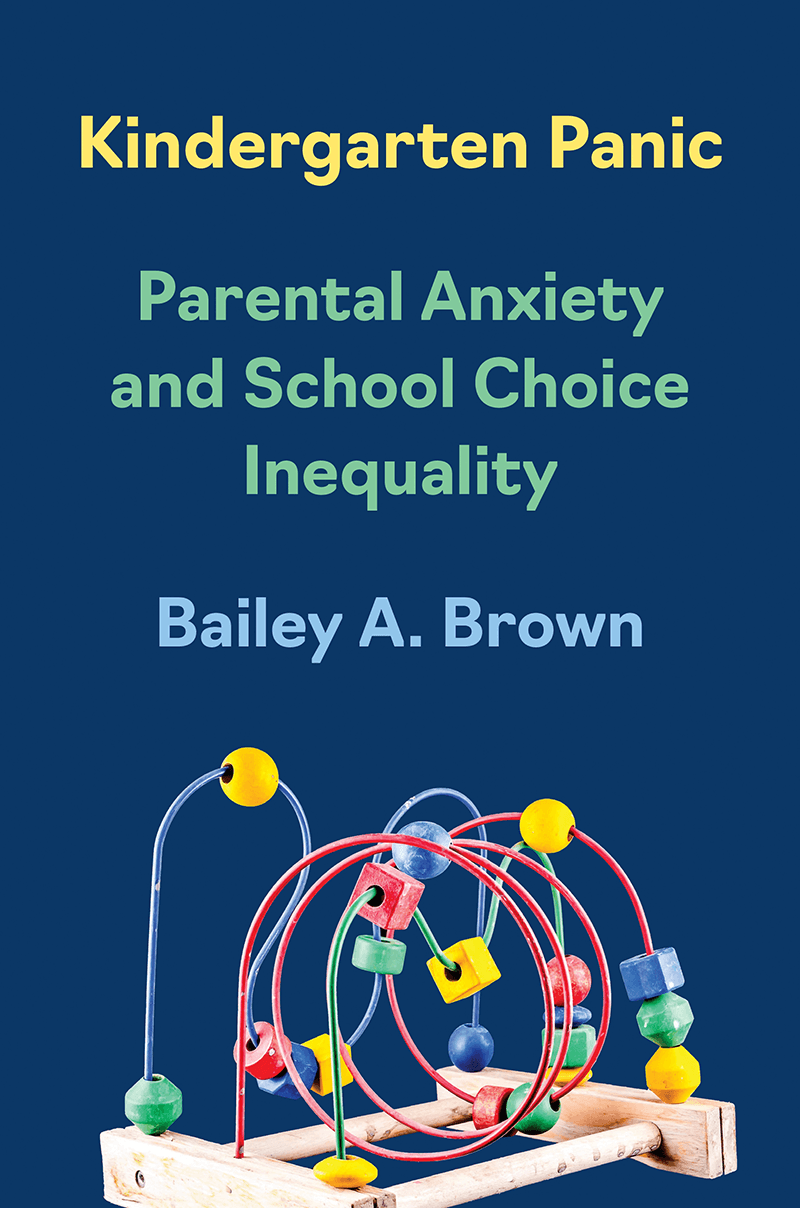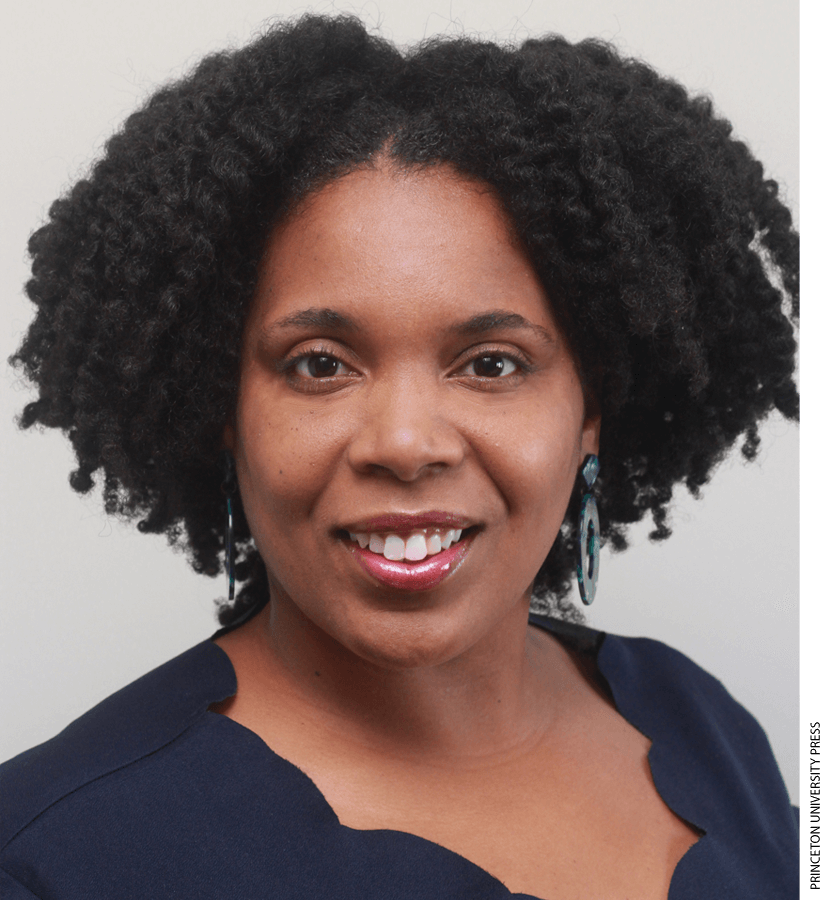
For many parents, the benefits of school choice policies are simple and intuitive: Instead of being confined to substandard schools based on their zip code, they now have the freedom to choose better options for their children. But Bailey Brown, a sociologist at Spelman College, doesn’t think this is the whole story. In her new book, Kindergarten Panic: Parental Anxiety and School Choice Inequality, she argues that school choice, far from freeing parents from a one-size-fits-all education system, instead forces them into complex and time-consuming decisions that only those with substantial resources can navigate.
Brown focuses on parents in New York City who must navigate a vast education system where families in certain districts can apply to elementary schools outside of their local zones through a lottery. Brown herself grew up in New York and in the 1990s took the Gifted & Talented test, which places high-aptitude elementary school students in the city’s best programs. Since then, opportunities to attend schools outside families’ districts have expanded far beyond just those students who score highly on a standardized test. Brown argues that, with ever more options to choose from, parents feel increasing pressure to find the perfect elementary school for their children. One described the sensation as “kinder panic.”
Drawing on interviews with more than 100 parents, Brown attempts to show how school choice creates more work for families to manage, particularly for women and “marginalized” groups. Mothers, not fathers, typically take the lead on selecting schools—searching websites, making connections with school administrators, and navigating paperwork. She notes differences in schooling decisions among the social classes: Working-class parents tend to support their local public schools, while immigrant and middle-class parents are more interested in the innovation and upward mobility offered through school choice. Brown argues that minority groups often struggle to find schools that are both academically rigorous and racially diverse, which adds extra work as they try to strike the right balance. She discusses how families navigate the within-school demographic changes that result from school choice, which she argues disrupts social networks in neighborhoods. And she concludes with policy proposals ranging from redistributing the city’s neediest students across an array of schools to overhauling the design of gifted programming and improving parent outreach.

by Bailey A. Brown
Princeton University Press, 2025, $120.00, 208 pages
While Brown demonstrates that choosing among many educational options requires significant research and thought, she ignores what is perhaps the most important question: Do the benefits of attending a better school justify all the extra work? A lesson Brown describes using with her college sociology students illustrates this one-sided perspective. She assigns each student a demographic profile that includes race, income, and proximity to a high- (or low-) quality school. Students must then make decisions on where they would send their hypothetical children, based on the resources they have. During this activity, she reports, students become frustrated both with the complexity of the decision-making process and because some find it harder than others to enroll their kids in their desired schools. Brown describes the lament of one of her students: “There are options, but there aren’t really options!”
Yet Brown does not appear to guide her students through an alternate but plausible version of this activity for comparison: one without school choice. Maybe when weighed against a situation with only one option, the complexities and imperfections of a school choice system would seem like a worthy trade-off. Several of the parents Brown interviews express how highly they value the ability to leave their poor-quality local school for a better one elsewhere. Instead, Brown wants her audience—both in her classroom and in her book—to attribute problems that would exist with or without school choice entirely to current school choice policies. She wants readers to view the additional work parents do to take advantage of school choice in isolation, not as a necessary cost in service of a better education.
Despite this one-sided view, Brown illuminates several legitimate issues with New York City’s school choice system. Among them are limited seats in high-quality schools, varying quality among the alternative schools, and the difficulty of navigating the bureaucracy. Yet many of these challenges stem from supply restrictions such as the cap on charter schools, something Brown neglects to discuss. New York City’s limit on the number of charter schools that can open in the city makes the process of getting into a charter much more difficult. Brown’s failure to address the charter cap is no small oversight—it is often the issue that leads to fights between parents and teacher unions.
Brown takes a “critical race theory stance” throughout her book, though readers don’t learn this until they read the methodological appendix that follows the book’s conclusion. Even though Brown only mentions critical race theory by name once, it’s important to understand how this lens distorts the book’s presentation of information.
Critical theory in general is a framework for analyzing social and political phenomena through the lens of power dynamics. In the case of critical race theory, these power dynamics are assumed to be based on historical racial dominance of whites in the United States, though Brown also considers the roles played by gender and social class.
Because critical theory is an interpretive rather than a scientific framework, academics who apply it in the social sciences often do not properly test their claims. For instance, an influential 2020 study analyzed data on infant mortality to show that Black doctors are better for Black babies due to white doctors’ implicit bias and systemic racism. But the differences in infant mortality between Black and white doctors disappeared when later analysts accounted for low birthweight, a fairly obvious confounding variable the original researchers failed to consider. Similar distortions and oversights appear throughout Brown’s book.
EdNext in your inbox
Sign up for the EdNext Weekly newsletter, and stay up to date with the Daily Digest, delivered straight to your inbox.
For instance, many of the parents noticed that high-quality schools were predominantly white, with one Black parent even wondering aloud if there was a “pass for the color of your skin” to gain access to the best schools. Brown leaves these assumptions unchallenged, instead leaning into the narrative that anti-Black bias among white parents leads to their racial clustering. Her interpretation overlooks other plausible factors that would complicate her narrative, such as the more likely explanation that white parents tend to avoid low-quality schools. Many parents of color mentioned that the schools in their neighborhoods were underperforming, which was often a motivation for them to look elsewhere. Brown doesn’t allow that perhaps white parents viewed these schools similarly and were even less likely to choose them since they weren’t in their neighborhoods.
Brown attempts to make the case that racial discrimination is rampant across New York City schools, presumably to justify the outsized importance of demographics in the decision-making process of her interviewees. She describes incidents of racial discrimination as related to her by parents. But these interviews often lack details or context. One Black parent believed her daughter was the victim of race-based bullying because some kids had placed thumbtacks under the daughter’s seat and attempted to push her down the stairs. There is no mention of the perpetrators’ race. It’s also unclear whether the attacks were a symptom of racial bias, poor discipline management, or a combination of the two. The school seemed to have a problem with discipline since the parent shared that the principal refused to suspend the offending students and “begged” the parent not to report the incident.

Another white parent said the parents in her neighborhood were uncomfortable with the racial diversity at a specific school. No details are provided about what these parents said or the context for their concerns. One of the few instances where Brown gives specific details on racist remarks is an incident that occurred between two immigrant students of color.
Brown’s commitment to critical race theory also leads her to make bold, unsubstantiated claims, such as “Black, Latino, and immigrant parents have always had to engage in additional labor to raise their children.” She cites no data to support this sweeping assertion, which doesn’t withstand scrutiny. For instance, a 2024 sociology study, using American Time Use Survey data, found Asian and white mothers spent the most time on childcare activities for children from birth to age 11, followed by Latina and Black mothers. This was the case even when adjusted for socioeconomic status. The same study also found Asian mothers spent the most time on educational activities for children 5–11 years old.
Brown presents school choice as too complex and burdensome, only exacerbating inequality. Yet very few of the parents she spoke with seem to share this view. Many expressed wanting more options, not fewer. Even after sharing their struggles, parents articulated how they would travel long distances for school if their children could get the education they needed. Of course, this isn’t ideal—parents would prefer to send their kids to their local schools if they were high quality and safe—but traversing the city certainly seems better than the alternative of relegating parents to their local school no matter what.
It’s not clear that Brown’s interviewees believe school choice is worse for inequality and racial disparities either. While she shows many Black and Latino parents wrestling with the issue of race in their educational decisions, they do not struggle to express the shortcomings of their local schools: violence and lack of academic rigor. School choice is precisely the tool they use to escape these challenges.
So, despite hundreds of interviews, readers of Kindergarten Panic will not get the full picture of the benefits and costs of school choice. Instead, they’ll read a list of complaints about a specific school choice system filtered through the author’s ideological lens. Other reviewers have hailed the book as exposing the “real lives” underlying school choice policies—but how real can they be when the choices parents say they want are delayed, deferred, or denied?
Neetu Arnold is a Paulson Policy Analyst at the Manhattan Institute, where she focuses on K–12 and higher education.
Suggested citation format:
Arnold, N. (2025). “What Parents Really Want: High-quality, safe schools are worth the effort to get kids into them.” Education Next, 25( 4), 20 August 2025.


